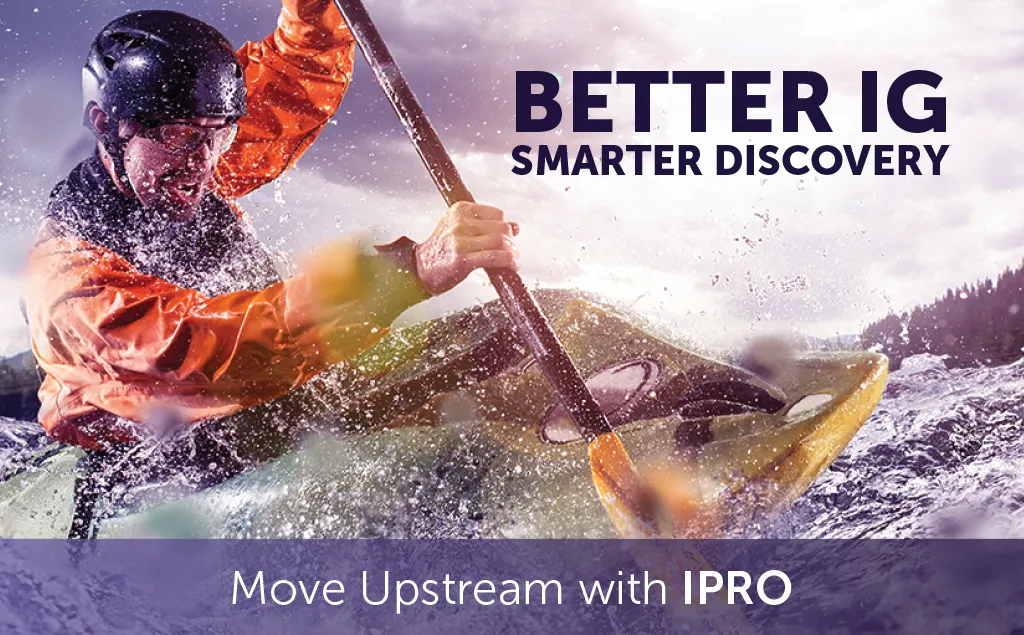
By Nick Inglis
We’re at a unique inflection point in the information profession as we are starting to see a greater convergence of information-related disciplines. The two drawing nearest are currently eDiscovery and Information Governance (IG).
For obvious reasons that I’ll draw out in this post – our information environments just work better when eDiscovery and Information Governance are aligned.
With the advancement of technology, we’re at a point that eDiscovery professionals now have at their disposal a new generation of technologies: artificial intelligence, machine learning, active learning, and more. In addition to new technologies, there is a philosophical shift to change how we do eDiscovery.
Historically, we would gather any information that might be related to our case, then we cull down that large pool of information into the data that’s truly relevant to the case. Today, with our technological capabilities, we can simply focus on relevance – skipping massive collections and merely finding the needles in the proverbial haystack.
This is prompting process change and an overhaul of the eDiscovery workflow as it has been traditionally understood – we will soon be bidding adieux to the classic EDRM workflow.
At this inflection point, eDiscovery has many potential paths that it could go down, and many professionals in the space seem unsure which routes will be successful.
IG offers a new path for eDiscovery
Meanwhile, also over the past decade, a new profession has been maturing – Information Governance. Born just over a decade ago, Information Governance is a new discipline whose purpose is to align all other information-related disciplines’ policies and practices. IG translates various dispersed policies (usually related to a single sub-discipline, e.g., Records Management, Content Management, Document Management, and yes, even eDiscovery, and all others) into a single organizational strategy across all information.
As we’ve seen, information governance can reduce the overall risk that information poses to an organization while increasing the value of our information assets, all while ensuring consistency in information practices across an organization.
As Information Governance has matured, we can now look at the discipline in terms of its’ process (and understanding beneficial alignment points along that process). Information Governance starts with planning and organizational alignment (understanding what information policies and practices you already have in place and making decisions about your future practices).
IG continues as a series of one-time projects (like data minimization, deduplication, PII audits, post-incident investigations, etc.), and, in mature programs, often applies automation (things like automated quarantines, auto-classification, PCI/PHI/PII scanning, and reports generation).
Tying eDiscovery and IG together
How do these two disciplines, eDiscovery and Information Governance, align? What we’ve learned at IPRO is that they can both build upon each other’s successes – and in doing so, create even more successful outcomes.
During the eDiscovery process (for those who aren’t familiar), there is often a “review” stage where individual pieces of information are, historically all by human reviewers, reviewed as to pertinence in the matter at hand. Inevitably though, reviewers also learn a lot more about the information they’re reviewing than simply relevance to the case at hand – often they find PII or personally identifiable information, or they come across misclassified information, and often find information and files that simply don’t belong within a corporate information environment.
Currently, though, all of those insights are simply lost. There is no mechanism by which a reviewer could even let someone within the organization know that there was an information issue to begin with. When you consider the legion of outside reviewers, law firms, and service providers that companies utilize today, there is little opportunity for reviewers even to know who they would share insights with.
The IPRO Way
In the IPRO model of unified eDiscovery and Information Governance, those insights gained during eDiscovery review are automatically captured so Information Governance professionals can take that action. Yes, our software is excellent in either discipline, but having our tools for both disciplines enhances both substantially.
As Information Governance professionals utilize these newly captured insights (that no one besides IPRO is capturing), you’re able to improve the overall information environment – we call this “information optimization,” and there are tremendous benefits to you for having information optimization – from improved efficiency across an organization (less searching and browsing through junk) through to better compliance with applicable regulation, from better search capabilities to better support for other disciplines like security and privacy.
These are all incredible benefits but the greatest benefit that comes from the IPRO unified model in action is that when an information environment becomes optimized by the professionals in Information Governance (often acting on the insights of eDiscovery professionals), the professionals in eDiscovery can make the eDiscovery process more efficient and effective. We can do this as there’s simply less irrelevant information to review, and an optimized environment is easier to review.
Over time, the unified model makes both disciplines more efficient, saving time and money with each new potential case. Drawing from Information Governance advancements, we’re able to get to relevance even faster in eDiscovery, and a myriad of other benefits that come from an optimized information environment that are too innumerable to articulate.
Learn more about how IPRO solutions combine eDiscovery and Information Governance to allow your organization to achieve better governance and smarter discovery.



